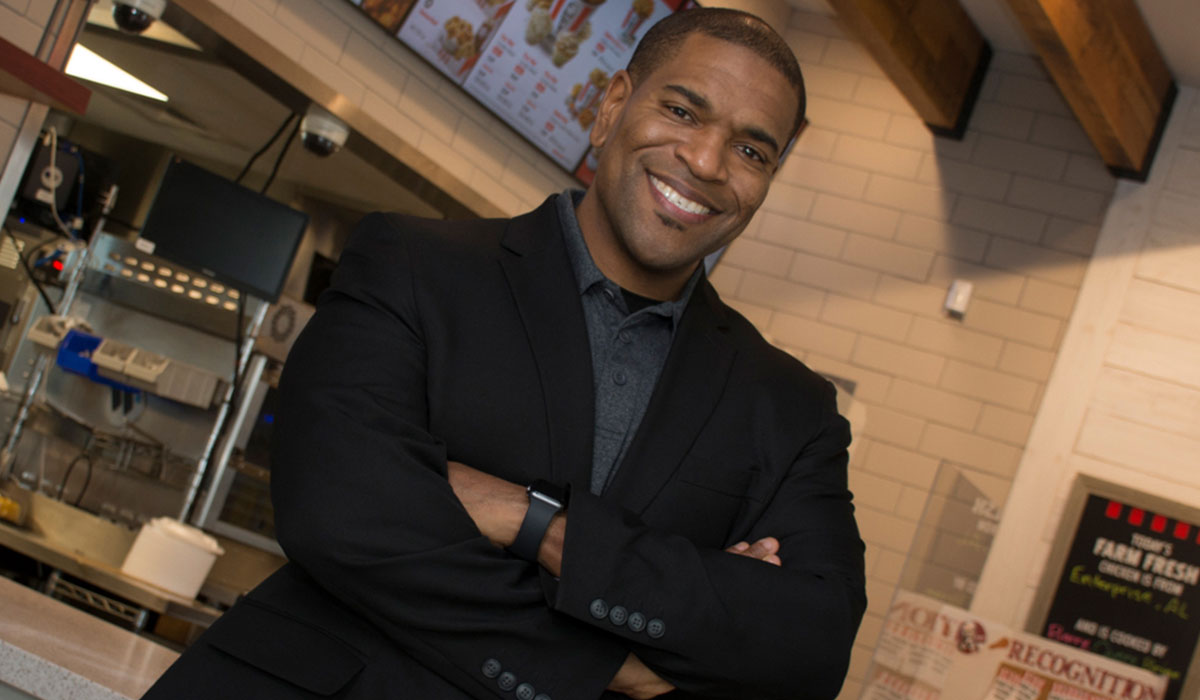Earlier in 2021, KFC reached 25,000 restaurants in more than 145 countries across the globe.
Only three other quick-service restaurants have reached that mark (Subway, McDonald’s, and Starbucks). The large chicken chain celebrated, but it’s not fully satisfied. It doesn’t want 35,000 or even 40,000. KFC believes it can hit 75,000 locations.
Much of that expansion will stem from international markets. KFC reported at its Global Investor Day that 90 percent of growth in the past five years took shape outside the U.S., with 70 percent of profits coming outside the U.S. and China. Even more encouraging, 95 percent of locations in the past five years were built in emerging markets. In 2020, KFC closed a net of 122 stores in the U.S., but opened a net of 1,018 international locations. However, KFC U.S. does have the largest pipeline of new build sites in more than a decade and is set up for net unit growth going forward.
BTIG analyst Peter Saleh said in a note that while management didn’t provide specific guidance on unit development or same-store sales, BTIG believes KFC can return to, if not exceed, its peak development pace set in 2019.
“Driving this expected growth will be emerging markets like Africa, existing but interpenetrated markets like Europe and Asia and a return to positive net development in the U.S. this year for the first time in over 15 years,” Saleh said in the note. “Looking ahead, we believe a return to historical development levels is key to sustaining Yum! Brands’ current trajectory.”
KFC’S COVID JOURNEY
KFC Looks to Hire 20,000 Employees as Sales Surge
Yum! is Rewriting History, but No ‘Victory Dance’ Just Yet
KFC Launches ‘Best Chicken Sandwich Ever’
KFC and Lifetime to Air Original Movie with Mario Lopez as Colonel Sanders
Check Out KFC’s Next-Generation Restaurant
KFC ended Q1 with 3,948 domestic stores and 21,344 international restaurants. The brand opened a net of five U.S. stores and a net of 287 international locations. In the past two quarters alone, KFC has opened nearly 700 net new restaurants, and that’s with 66 percent of the world’s KFCs yet to be built.
The chain delivered 4 percent unit growth in the quarter, with strength in China, India, Russia, and Thailand. In the past year, KFC has grown market share in nearly all of its top-20 markets. U.S. comps lifted 11 percent on a two-year basis while international same-store sales declined 2 percent on a two-year stack. The company said it saw strength from the U.K., Australia, Canada, and Japan markets and encouraging results from the Middle East, Mexico, and Africa.
For some history, KFC’s development peaked at 6.6 percent in 2019, Saleh said, before suffering pandemic-related setbacks that moderated development to 3.7 percent.
A key: KFC’s global new unit payback periods range between 3–5 years, suggesting cash-on-cash returns between 20–33 percent. This level would be healthy enough to sustain ongoing development, Saleh said.
Here’s how KFC has progressed in the past two decades, per BTIG and company documents.
U.S units
2000: 5,364
2005: 5,443
Change: 79
2010: 5,055
Change: –388
2011: 4,780
Change: –275
2012: 4,618
Change: –162
2013: 4,491
Change: –127
2014: 4,370
Change: –121
2015: 4,270
Change: –100
2016: 4,167
Change: –103
2017: 4,109
Change: –58
2018: 4,074
Change: –35
2019: 4,064
Change: –9
2020: 3,943
Change: –122
“I think all of this is actually fairly intuitive. Where we’re seeing ourselves successful is for the most part in developed markets, like the U.S, Canada, Australia, the U.K. for KFC, where they’re ahead of the curve a little bit on vaccination, keeping the virus under control, people are back trading, and where our businesses going into the pandemic had skewed more off-premise to begin with and had a well-developed digital and tech capabilities,” Yum! CEO David Gibbs said in late April.
KFC’s other major race comes in the digital space, which increased 72 percent to more than $10 billion in 2020. The chain earned another $3 billion in the first quarter. Digital channels now account for a record 43 percent of sales, driven by rapid expansion of delivery, click and collect, and the introduction of new channel ordering options.
To improve delivery order speed, KFC rolled out a Driver Tracking System that allows restaurants to track driver availability and location. The system lets customers track their orders, as well. To further improve throughput, KFC reduced menu complexity globally to increase speed of service. In Australia, the chain reduced its menu by 5 to 10 percent, and that led to higher average check and traffic. In the U.S., KFC improved its drive-thru speed by nearly 15 seconds in Q1.
“Looking ahead, we believe many quick-service operators will opt for slimmer menus as the benefits from faster throughput outweigh the impact from less menu diversity,” Saleh said.
However, the chain isn’t totally turning away from menu expansion as the brand is testing plant-based options in eight markets. KFC, in partnership with Beyond Meat, tested Beyond Fried Chicken in July 2020 throughout Southern California. In August, KFC Canada announced that plant-based sandwiches will be available permanently coast-to-coast beginning August 10. Saleh said that while those products will eventually reach menus, “broader acceptance could be many years away.”
Other operational enhancements for KFC include: Bluetooth sensors that ensure products are the right temperature, augmented reality glasses for better training experiences, virtual audit tools to reduce costs and increase frequency of audits, advanced production planning for high product availability and less waste, and futuristic tech, such as computer vision and robotics.









